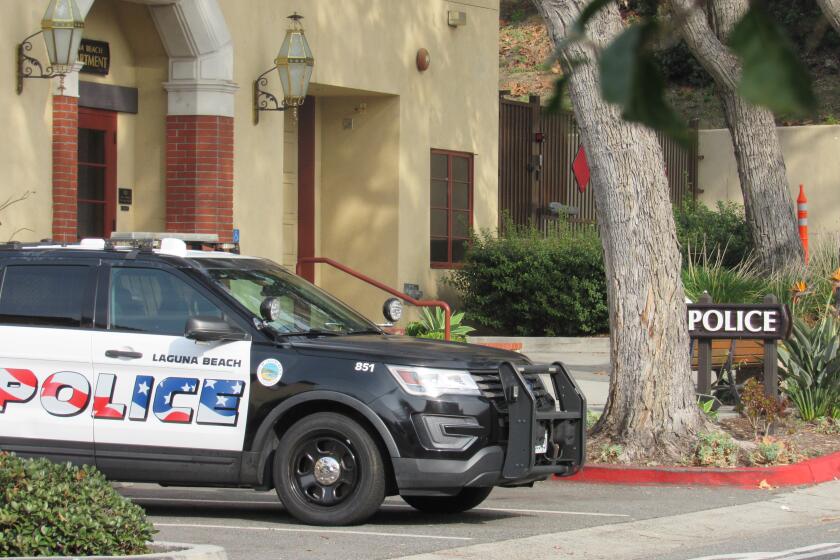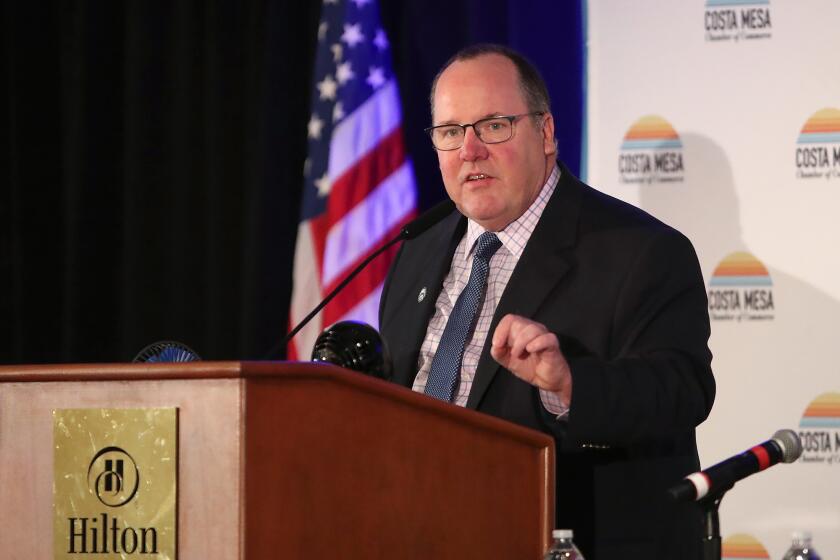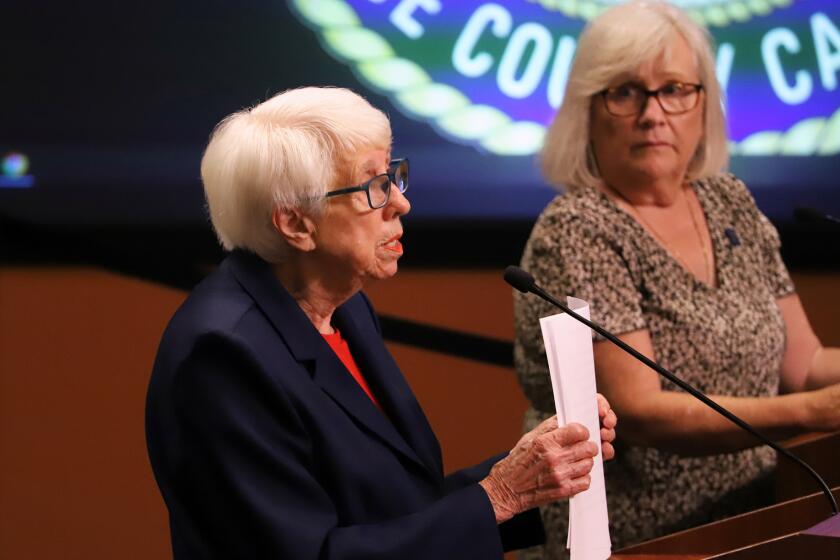Winning trio are ‘true scientists’
A trio of eighth-graders at Mariners Christian School in Costa Mesa knocked ‘em dead at the Orange County Science Fair a few weeks ago, taking first, second and third place in the physics, microbiology and engineering categories.
The three conducted highly complex projects for their grade level, including examining the potential for harmful rays in certain man-made lights, exploring the effectiveness of sandbags in soaking up water and studying bacteria levels in lemons from local restaurants.
In their respective categories, Erik Alkire, 14, of Costa Mesa, received first place; Jeremy Fukushima, 14, of Trabuco Canyon, got second; and Rachel Chandler, 14, of Westminster, took third place.
Alkire’s project was probably the most complicated and highly technical of the bunch, although his findings were equally dubious due to the subject content: Do man-made light sources harm you?
“My biggest finding,” he said, “is that LCD displays, such as cell phones and computer screens, may produce very low levels of radiation.”
LCD stands for liquid crystal display, Alkire said, adding that he built a cloud chamber using rubbing alcohol and dry ice. He then sealed a glass fish tank and placed a heater on top to create “a super saturated environment.”
Alkire said he came up with the idea after taking a trip to Griffith Observatory in Los Angeles and seeing the cloud chamber there. His father, Michael Alkire, an anesthesiologist, lent a hand.
“I love lighting, special effects and theatrical,” the younger Alkire said. “And I’m around it a lot. So I want to make sure I’m safe and that the industry is safe.”
He said he was thinking about becoming a physicist for a career.
Fukushima garnered second place in the microbiology division by studying at what point bacteria starts growing on lemons.
To find out, he went around to 36 different restaurants in Orange County, from McDonald’s to Burger King to Jack in the Box, and asked them for slices of lemons, if they’d be so kind.
“I came up with the idea after seeing how much my mom would always ask for lemons in her iced tea, and it got me to thinking if they were dangerous or not,” he said.
His conclusion is that after the third day, without fail, bacteria begins to grow, and it would be prudent to squeeze the lemon juice out of the lemon instead of dunking the whole lemon in the drink.
But that’s not to say the lemons are dangerous, he said, adding that he called back all the restaurants. The managers told him they swap out the old lemons for fresh ones on a daily basis.
Then came Chandler, who studied the saturation of bags full of sand versus soil.
It turns out that sand isn’t as effective in soaking up flood waters, but it holds together better than soil, which tends to deteriorate and fall out of the bag after a long period of time and too much water.
She said she came up with the idea from her uncle, Chuck Garcia, a construction worker who has often wondered about the differences between the two.
“Most engineering places use sand because it holds firm,” she said.
Jeff Williamson, the middle school principal, said the students are “blessed” for having such a great science teacher in Mary Filakouridis.
“She’s amazing,” he said. “It’s not like we’re a magnet school devoted to science or sports or performing arts. We just truly do everything well, and it’s because of the great teachers.”
Said Filakouridis, “I am so proud of all the hard work my students have put into their science fair projects. The efforts and great results show what it takes to be a true scientist.”
All the latest on Orange County from Orange County.
Get our free TimesOC newsletter.
You may occasionally receive promotional content from the Daily Pilot.



